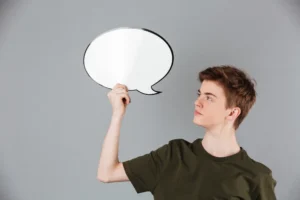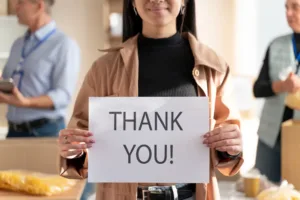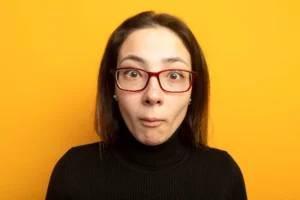Have you ever sent a simple 👍 and wondered if the other person understood exactly what you meant? Or perhaps you’ve received it and felt unsure—was it genuine agreement, a brush-off, or even sarcasm? The thumbs up emoji may seem like one of the most straightforward symbols in our digital vocabulary, yet it carries surprisingly complex layers of meaning depending on context, culture, and relationship.
As someone who has worked extensively in communication-focused writing and observed how digital interactions evolve, I’ve found that this tiny symbol often sparks bigger conversations than we expect. Let’s explore what the thumbs up emoji truly conveys, how people across different contexts use it, and the best ways to respond without misreading the intent.
What Does the Thumbs Up Emoji Mean?
At its most basic level, the thumbs up emoji represents approval, agreement, or encouragement. Think of it as the digital equivalent of nodding along in conversation. But like any form of communication, its meaning is shaped by tone, timing, and cultural nuance.
1. Agreement and Acknowledgement
Many people use 👍 simply to show they’ve read and understood a message. For example, if a colleague texts:
“I’ll send you the report by 5 PM.”
A quick 👍 reply doesn’t just signal agreement; it also acknowledges the message without needing more words. In workplaces where speed matters, this is often the preferred shorthand.
2. Positive Reinforcement
It can also be a way of cheering someone on. A friend shares:
“Finally finished my first 10K run today!”
Responding with 👍 expresses support and validation, even when you don’t have time to write a longer reply.
3. Cultural Differences
Interestingly, studies in digital communication suggest that while the thumbs up emoji is seen as supportive in much of North America and Europe, some cultures interpret it differently. In parts of the Middle East, for instance, the thumbs up gesture historically carried offensive connotations, though the emoji version has softened its perception online.
4. Sarcasm and Dismissiveness
Here’s where it gets tricky: sometimes, 👍 is used to shut down a conversation. For instance, if you write a long message and only receive a lone thumbs up, it can feel dismissive. Younger users on platforms like TikTok and Reddit often discuss how they perceive it as passive-aggressive in certain contexts.
How People Use the Thumbs Up Emoji in Different Contexts
The meaning of 👍 shifts depending on who sends it and where. Let’s break down some real-world examples:
Workplace Communication
In professional settings, 👍 is often used as a quick confirmation. According to a Workplace Communication Trends report by Slack, nearly 60% of employees prefer using emojis for efficiency in remote work. But be mindful—while managers might intend it as “Great, I agree,” employees sometimes interpret it as “Message received, no need for further discussion.”
Friendships and Family
Among friends, 👍 tends to be light-hearted and supportive. But in family chats, generational gaps come into play. Younger people often feel it’s a lazy response, while older relatives may see it as warm and affirming.
Social Media
On platforms like Facebook or Instagram, 👍 is part of the standard reaction set. It often means “I saw this and liked it,” without deeper engagement. Here, it functions more as a quick interaction tool than as part of nuanced conversation.
Want to master every emoji?
Get the 3500+ Emoji Meanings Guide — Contains the meanings of all the emojis used in texting.
👉 Download it here
Best Responses to a Thumbs Up Emoji
Responding to 👍 depends entirely on the relationship and context. Here are practical, human-tested responses:
1. When It Means Agreement
If a colleague replies 👍 to confirm a task:
- Best Response: Nothing more is needed. Silence here communicates trust that the agreement stands.
2. When It Feels Dismissive
If you sense sarcasm or dismissal:
- Best Response: Politely clarify. Example: “Just making sure we’re on the same page—did you mean you agree?”
This avoids passive-aggressive loops while maintaining professionalism.
3. When It’s Supportive
If a friend cheers you on with 👍:
- Best Response: Expand the conversation. Example: “Thanks! Couldn’t have done it without your encouragement.”
4. When It’s from Older Relatives
Remember, generational differences matter. If your parent texts 👍 after a long update:
- Best Response: Accept it as their way of saying, “I’m proud of you.” You might respond with a heart ❤️ or a warm text back to close the loop.
Expert Insights on Emoji Communication
Dr. Vyvyan Evans, an expert in digital communication and author of The Emoji Code, explains that emojis act as emotional amplifiers. They don’t just replace words—they shape how we interpret them. He notes that the thumbs up emoji, in particular, reflects the human need for quick affirmation in increasingly digital conversations.
Meanwhile, a Pew Research Center study on digital communication found that nearly 92% of online users incorporate emojis regularly, and symbols like 👍 rank among the most frequently used. This shows not only their popularity but also the potential for misinterpretation when context isn’t clear.
Evergreen Takeaways for Using and Responding to 👍
- Read the Relationship, Not Just the Emoji: A thumbs up from your manager isn’t the same as one from your best friend.
- Consider Cultural and Generational Differences: What feels supportive in one context may seem passive-aggressive in another.
- Don’t Overthink It (Most of the Time): In 80% of cases, 👍 simply means agreement or acknowledgement.
- Clarify When Unsure: If you suspect sarcasm, ask politely instead of letting misinterpretations grow.
- Match Energy in Responses: If it’s supportive, give warmth back. If it’s neutral, leave it be.
FAQs About the Thumbs Up Emoji
Q: Is a thumbs up emoji rude?
Not inherently, but it can come across as dismissive depending on tone and context. Younger users often perceive it more negatively than older ones.
Q: What does it mean when my boss replies with 👍?
Usually, it’s a shorthand for “message received” or “I agree.” Unless their tone suggests otherwise, take it at face value.
Q: Should I reply to a thumbs up emoji?
Not always. In most cases, no reply is needed. But if the emoji follows a personal update, a short warm response can strengthen the connection.
Q: Can the thumbs up emoji replace words in professional settings?
It depends on the culture of your workplace. Some teams embrace it, while others may see it as too casual.
Final Thoughts
The thumbs up emoji may look like a simple tap on the screen, but its meaning runs deeper than we often assume. Whether it’s affirmation, dismissal, or encouragement, understanding how to interpret and respond to 👍 can save you from awkward misunderstandings and help you connect more thoughtfully online.
So next time someone sends you a 👍, pause for a moment before reacting. Ask yourself: what’s the relationship here, and what’s the likely intent? That extra second of reflection can transform a tiny symbol into a more meaningful exchange.
👉 What do you think about the thumbs up emoji? Do you see it as supportive or dismissive? Share your experiences in the comments—I’d love to hear your take!
Read Also: Best Comebacks When Someone Calls You Fat: Turning Insults Into Confidence





I got what you mean ,saved to bookmarks, very nice website .